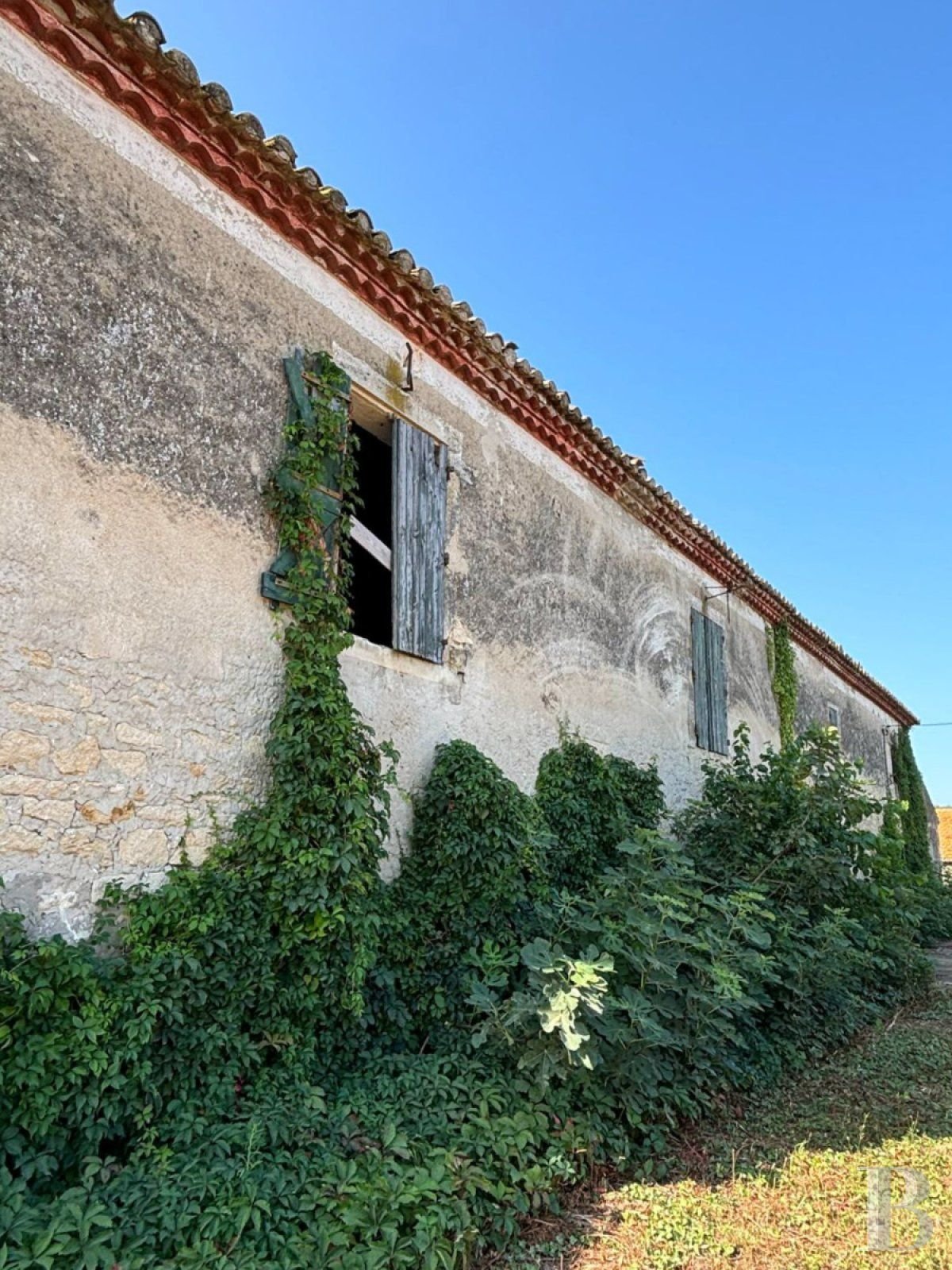A 19th-century rural Provence farmhouse to be entirely restored, with 360° views, on 2 hectares of land in the middle of the Camargue rice fields, awa
A 19th-century rural Provence farmhouse to be entirely restored, with 360° views, on 2 hectares of land in the middle of the Camargue rice fields, away from any disturbance.
The Beaucaire plain was already famous for its meadows, vineyards, olive groves and old farms, where traditional farming methods are jealously preserved, but it has also recently become renowned thanks to its rice fields which, to the north of Arles, mark out new frontiers for the Camargue area. It was once pastureland for horses and bulls. It is well preserved thanks to its location on an alluvial plain, which makes it both very fertile and exempt from property development.
This wild agricultural area, where organic, responsible or traditional farms are booming, is just 15 minutes from Nîmes, with its high-speed TGV railway station and Nîmes-Garons airport, 20 minutes from Arles TGV station, 40 minutes from Avignon TGV station and 1 hour and 15 minutes from the Marseille-Provence and Montpellier-Méditerranée international airports, respectively to the east and west.
This 19th-century limestone rural Provence farmhouse is typical of the Camargue countryside, inasmuch as it is built in the middle of an immense expanse of rice fields as well as cropped meadows, with part of it devoted to living space and another part dedicated to farming. Both are combined in the same building, with the slight difference in height denoting the different uses. A former stable boy's lodgings are located at a right angle to the farmhouse.
Away from the main building and the enclosed barns, an open-sided, metal-structured hangar built in the 1950s marks the limit of the property towards the rice fields.
It can be kept (for agricultural use only) or demolished. Lastly, a small building used as a garage is adjacent to the main building.
The farmhouse, which is sold with approximately 2 hectares of land and whose two main façades face north and south, can be reached via a passing road, a tarmac access road that leads into the farm's entrance courtyard, or by dirt tracks through the rice fields leading to the rear of the farmhouse.
The almost 2 hectares belonging to the property are delimited by ditches, which are called 'roubines' locally, by the access road on the side of the farm courtyard and by the natural vegetation for the rest. As per tradition in the Camargue, there are no fences on the estate, which is delimited only by vegetation acting primarily as windbreaks.
The perfectly isolated location of this farmhouse, which bears the name of a martyred saint, means it stands in a totally undisturbed location and boasts 360° views over a radius of 100 km of the Provence landscape. The panorama stretches as far as the Alpilles Mountains and Mont Ventoux, which is 150 km away yet is still clearly visible from the edge of the rice fields when the Mistral is blowing.
A timeless aspect accentuated by its uniqueness is bestowed by all of the above on the site, which is cloaked in silence and protected from the many winds that blow through Provence thanks its long-standing location.
The farmhouseWere it not for its roof of half-round tiles, underpinned by a double Génoise corbel, keeping rain out of the building, as well as several shutters protecting what little remains of the doors and windows in what were the living quarters, this could be considered as a ruin.
This 19th century farmhouse with 252 m² of living space adjoining the barns was successively occupied by couples of tenant farmers from its origins until recent times. It is a striking example of rural life's harsh conditions in the past, with its beaten earth floors, wide stripped wooden flooring, no sanitary facilities, animal troughs as sinks and makeshift fireplaces. However, its architecture is still typical of some aspects of farm dwellings, with exposed beams and joists on the ceilings, a ...





